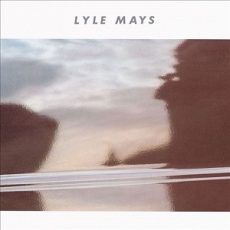
Daily Dose Of Jazz…
Lyle David Mays was born November 27, 1953 in Wausaukee, Wisconsin. While growing up he had four main interests: chess, mathematics, architecture, and music. His mother played piano and organ, and his father taught himself to play guitar by ear. His teacher allowed him to practice improvisation after the structured elements of each lesson were completed. At the age of nine, he played the organ at a family member’s wedding, and fourteen he began to play in church. During his senior year of high school he was introduced to jazz pianist Marian McPartland.
He attended the University of North Texas where he composed and arranged for the One O’Clock Lab Band and was the composer and arranger for the Grammy Award-nominated album Lab 75. After leaving the University of North Texas, Mays toured the US and Europe with Woody Herman’s Thundering Herd.
In 1975 he met Pat Metheny at the Wichita Jazz Festival, with whom he soon co-founded the Pat Metheny Group. Mays had an extraordinary career as a core musical architect and sound designer of the group for more than three decades. The group had 23 Grammy nominations, winning the award 11 times.
In 2010 Lyle decided to retire from public music performance and became a software development manager because of changes in the music industry. He composed and recorded children’s audiobooks, composed several contemporary classical pieces and formed his own band.
As an amateur architect, he was influenced by fellow Wisconsinian, Frank Lloyd Wright and designed his own house, home studio, and his sister’s house. Mays brought intellectual and organic architectural concepts in his music and sound design based on the innovative integration of many different sources to create a completely new soundscape.
He recorded seven as a leader, two as member of the One O’Clock Lab Band and 14 with the Pat Metheny Band, and as a sideman, seventeen. Mays won eleven Grammys as a member of the Pat Metheny Group and whose important influences were the 1968 recordings of Bill Evans at the Montreux Jazz Festival and Filles de Kilimanjaro by Miles Davis
Pianist and composer Lyle Mays, who was posthumously awarded the Grammy Award for Best Instrumental Composition in 2022 for his composition Eberhard, transitioned in Los Angeles, California on February 10, 2020 at age 66.
More Posts: bandleader,composer,history,instrumental,jazz,music,piano
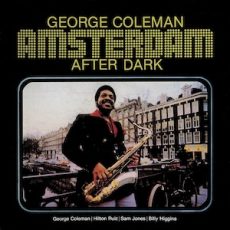
Requisites
Amsterdam After Dark ~ George Coleman | By Eddie Carter
George Coleman enters this morning’s spotlight with an excellent 1979 quartet album, Amsterdam After Dark (Timeless SJP 129). I first heard him playing alto on Houseparty and The Sermon. I later discovered he also played tenor and enjoyed his work on Eastern Rebellion, ‘Four’ and More, Maiden Voyage, Miles Davis In Europe, My Funny Valentine and Seven Steps To Heaven. This morning’s album from the library was his debut as a leader, and he composed four of the tunes. He’s joined on this date by The Hilton Ruiz Trio. Hilton Ruiz on piano and Eastern Rebellion colleagues Sam Jones on bass and Billy Higgins on drums. My copy is the original Netherlands Stereo release.
Side One opens with the trio’s introduction to the title tune, Amsterdam After Dark. George takes over and starts the fire burning on the song’s infectious melody and opening solo. Hilton sinks his teeth into the second reading, and then Sam speaks confidently, preceding the tenor’s joyful vitality in the closing chorus. Hilton Ruiz’s New Arrival picks up the quartet’s pace in an engaging opening chorus. Coleman takes flight first and builds a perfectly crafted interpretation effectively. Ruiz comes on next and is shown to great advantage in the closing statement ahead of the theme’s reprise and fadeout.
Lo-Joe is a feisty original that opens with an airy statement of the theme. George gets things going with a passionate first solo, followed by Hilton, who suggests a happy mood in the second statement. Billy’s brushwork in the closing statement swings very nicely into the foursome’s ending theme and exit. Autumn In New York by Vernon Duke is the album’s only standard. The quartet dresses up this old favorite with an intimately tender introduction and melody. Coleman’s opening statement is reflective and quite beautiful. Ruiz takes a moment for an elegantly exquisite comment leading to the leader’s delicately pretty ending.
Apache Dance is an impressive tune from the opening notes of the two-instrument conversation with tenor sax and drums, leading to a quick run of the ensemble’s theme. George unravels a lot of twists and turns in the first solo. Hilton comes right behind him, keeping his foot on the gas. Billy delivers the song’s final solo until the group reappears to take it out. Blondie’s Waltz begins with the quartet establishing an optimistic melody. Coleman starts things off with a beautifully phrased statement. Ruiz jumps in next to move things along in a lively interpretation. Higgins adds to the fun with a short spot until Coleman’s reappearance for the finale.
Wim Wigt produced Amsterdam After Dark. Bob De Caro and Jim McCurdy were the recording engineers. The album has an exceptional soundstage that comes through your speakers convincingly. If you close your eyes, it’s like the musicians are playing right in front of you. George Coleman is on fire throughout each selection, and the trio compliments him efficiently. At 88 years old, he’s showing no signs of slowing down and is still performing for jazz fans. I’ve caught a few of his performances at Smalls via their nightly streams. If you only have albums with George Coleman as a sideman, I invite you to take a trip to visit Amsterdam After Dark. It’s worth every penny for a spot in your library and is an excellent trip you can take without leaving the comfort of your chair!
~ Eastern Rebellion (Timeless SJP 101), ‘Four’ and More (Columbia CL 2453/CS 9253), Houseparty (Blue Note BLP 4002/BST 84002), Maiden Voyage (Blue Note BLP 4195/BST 84195), Miles Davis In Europe (Columbia CL 2183/CS 8983), My Funny Valentine (Columbia CL 2306/CS 9106), Seven Steps To Heaven (Columbia CL 2051/CS 8851), The Sermon (Blue Note BLP 4011/BST 84011) – Source: Discogs.com ~ Autumn In New York – Source: JazzStandards.com © 2023 by Edward Thomas Carter
More Posts: choice,classic,collectible,collector,history,instrumental,jazz,music,saxophone
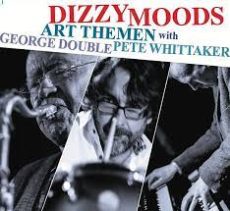
Daily Dose Of Jazz…
Arthur Edward George Themen was born November 26, 1939 in Manchester, England, where he was involved with the traditional jazz scene in the late 1950s as a self-taught musician, having started playing clarinet as a schoolboy at Manchester Grammar School.
In 1958 he began his medical studies at the University of Cambridge. While there he started playing jazz with the Cambridge University Jazz Band bandmates including Lionel Grigson, Dave Gelly, Jonathan Lynn, and John Hart. Under pianist Grigson’s leadership they achieved near professional standard with a swinging hard-bop style that swept the board in the fiercely contested Inter-University Jazz Band Competitions.
By 1964 he was an orthopaedic consultant playing blues with Jack Bruce and Alexis Korner and was a member of Alexis Korner’s Blues Incorporated. In 1965, Themen played with the Peter Stuyvesant Jazz Orchestra in Zürich, Switzerland going on to play with Michael Garrick, Ian Carr, and Graham Collier’s Music.
The Seventies saw him playing with Stan Tracey, touring with him all over the world as well as around the UK. Art has played and toured with visiting US musicians Charlie Rouse, Nat Adderley, Red Rodney, George Coleman, and Al Haig.
In 1995 he formed a quartet with pianist John Critchinson. Themen’s style originally owed much to the influence of Dexter Gordon and Sonny Rollins, but later influences included such disparate saxophonists as Coleman Hawkins, Evan Parker and John Coltrane. He was inspired to play saxophone after he attended a gig by the Dankworth Seven, at the local Palais, at the age of 16, with a female cousin and his future was set.
Following his retirement as a consultant orthopaedic surgery consultant, saxophonist Art Themen has focused on his jazz career.
More Posts: bandleader,history,instrumental,jazz,music,saxophone
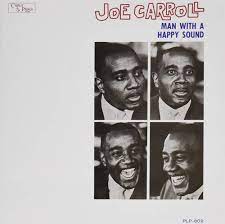
Daily Dose Of Jazz…
Joe “Bebop” Carroll was born Joseph Paul Taylor in Philadelphia, Pennsylvania on November 25, 1919. In 1949 he became a member of the Dizzy Gillespie big band. After the band broke up a year later, Carroll continued in a small group formed by Gillespie. In 1953, he left Gillespie to pursue a solo career and recorded albums for Epic Records in the 1950s.
Vocalist Joe Carroll, whose collaborations with Gillespie included the humorous songs Swing Low, Sweet Cadillac and Oo Bla Dee, transitioned on February 1, 1981.
More Posts: bandleader,history,instrumental,jazz,music,vocal
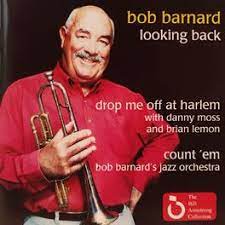
Daily Dose Of Jazz…
Robert Graeme Barnard was born on November 24, 1933 in Melbourne, Australia and his parents had formed a dance band in the 1920s, his mother was the bandleader and pianist, his father on saxophone, drums and banjo. His older brother Len joined them on drums at age 11. He took trumpet lessons from age 11 and played clarinet in a local brass band before he joined the family band at 14 in 1947.
When his brother Len formed his own group, Len’s South City Stompers the next year he joined on trumpet and they made their first recording in 1949 on his 16th birthday. The following year they began a weekly radio broadcast as Len Barnard’s Dixieland Jazz Band. He played with the group until 1955 after being cheated of their takings and stranded in Tumut, Australia. Relocating to Sydney he performed with Ray Price Trio before returning to Melbourne.
In 1958 Barnard joined the Graeme Bell band for an Australian tour. He worked for Brashs from 1958 to 1962, while performing after business hours. He went back to Sydney in 1962 and as a member of Graeme Bell and His All-Stars appeared on Trad Pad, a TV special program.
He was nominated in 1996 at the ARIA Music Awards of 1996 for Best Jazz Album for Live at the Sydney Opera House, which was recorded with the Australian Jazz Allstars.
Trumpeter and cornetist Bob Barnard, who was made a Member of the Order of Australia (AM) for service to music, particularly jazz, transitioned on May 7, 2022.
More Posts: bandleader,cornet,history,instrumental,jazz,music,trumpet


